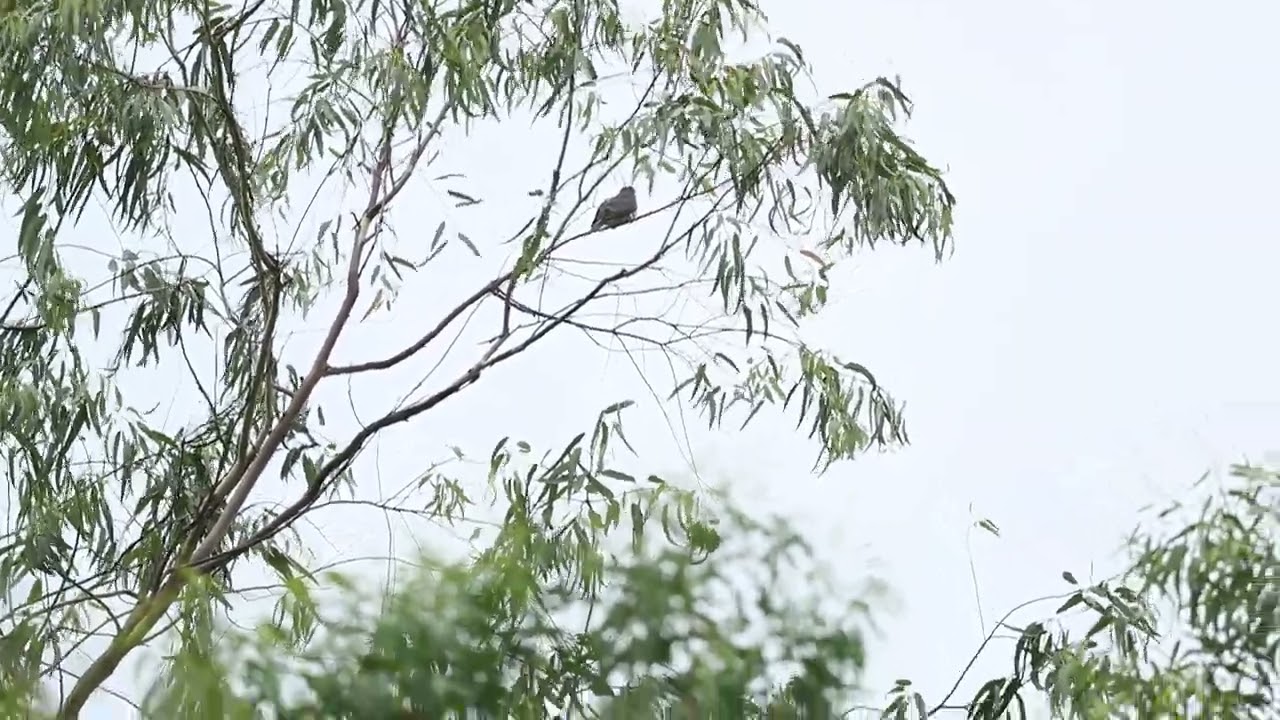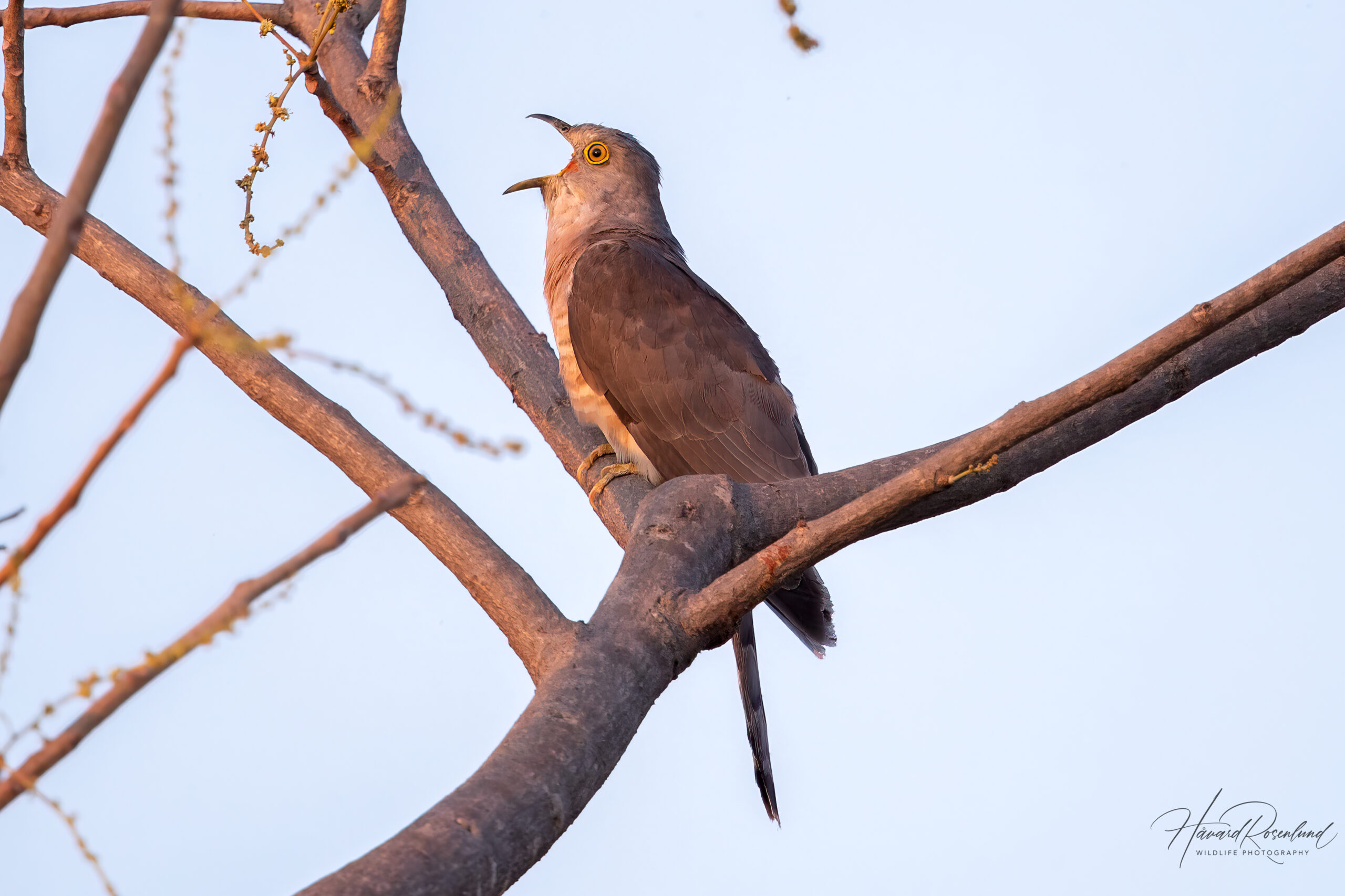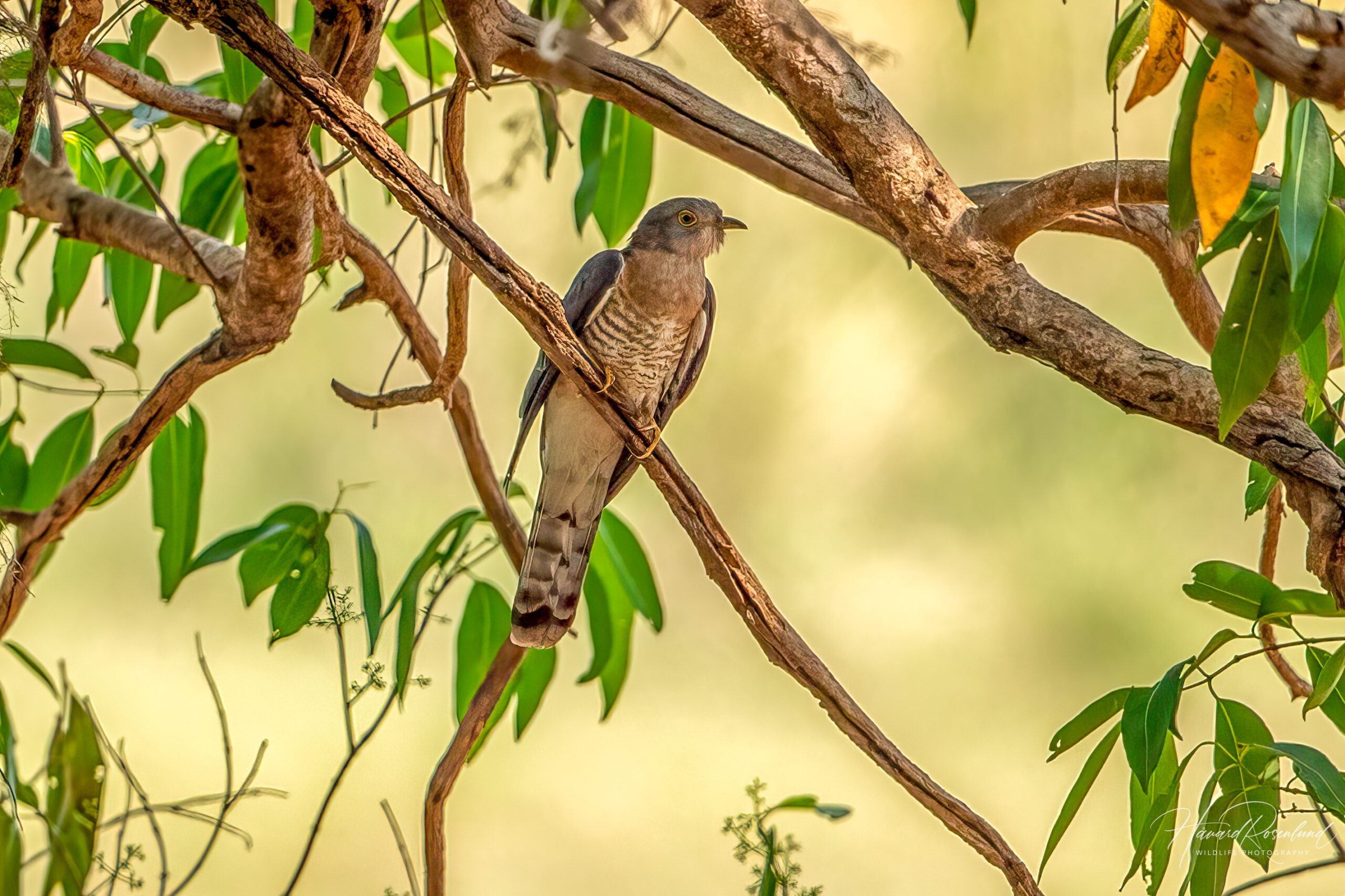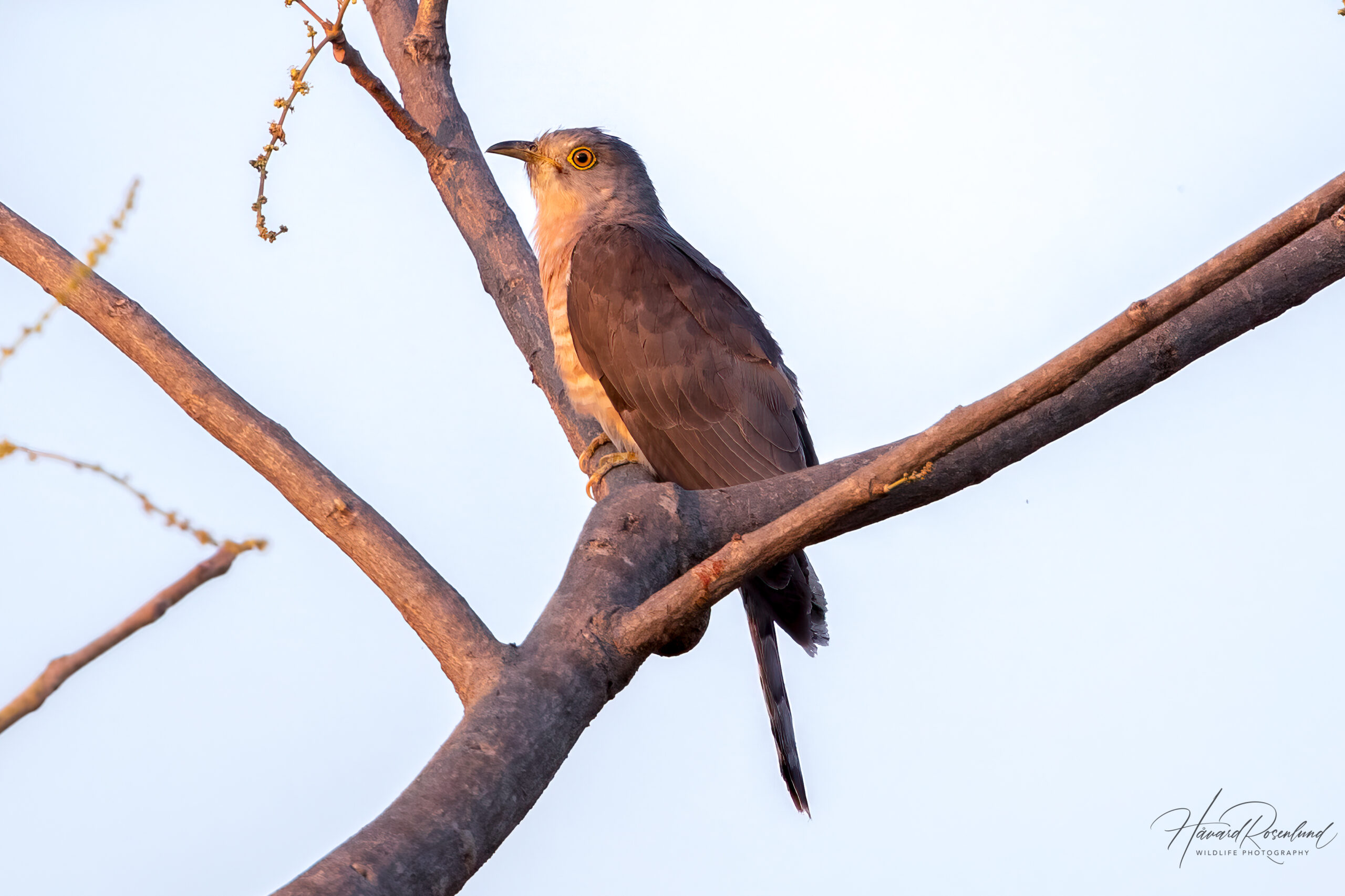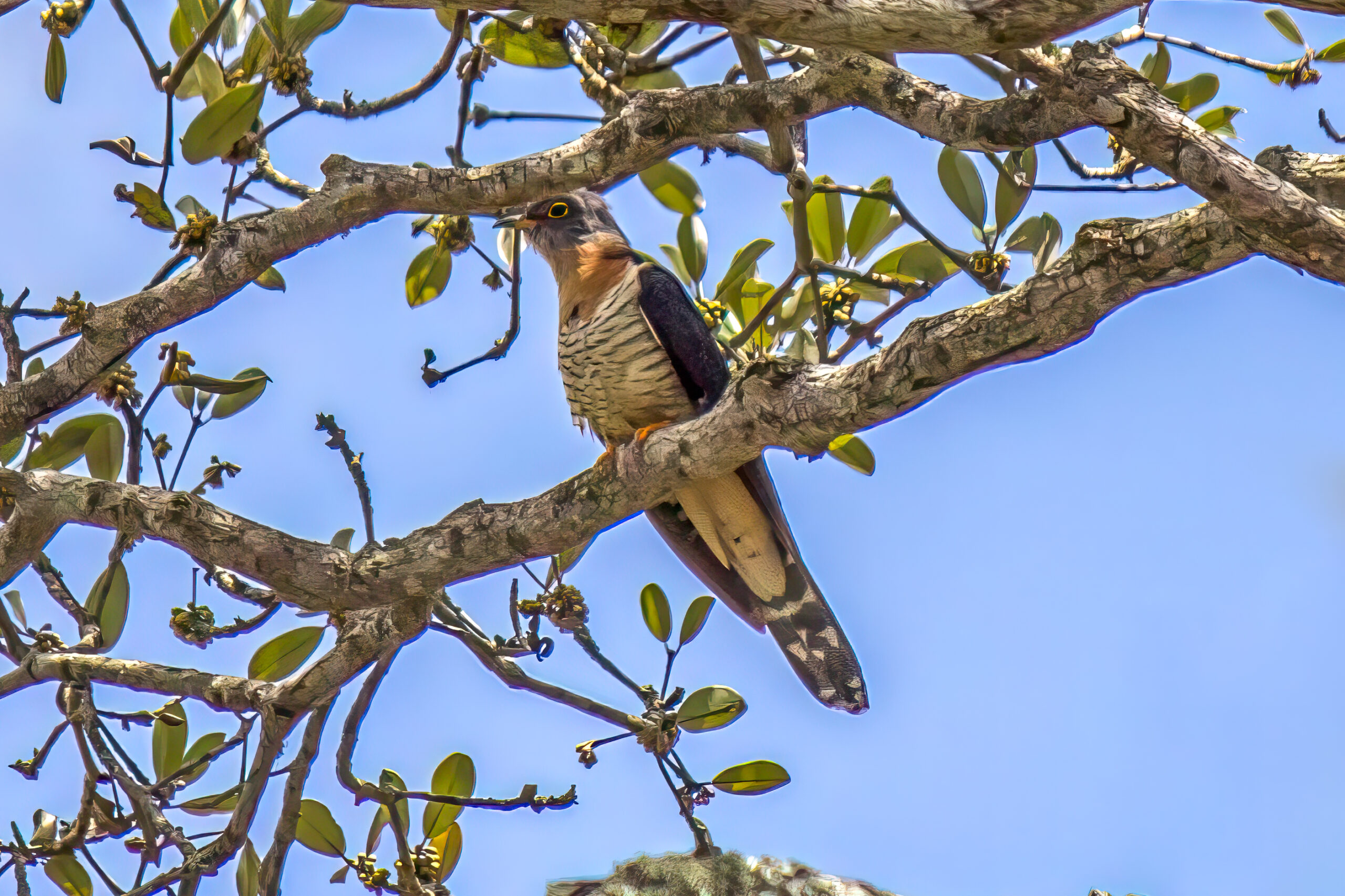Description
The common hawk-cuckoo (Hierococcyx varius) is a species of cuckoo found across the Indian subcontinent, including India, Pakistan, Nepal, Bhutan, and Bangladesh. This bird measures approximately 30-34 cm (11.8-13.4 in) in length and has a wingspan of around 50-55 cm (19.7-21.7 in). The hawk-cuckoo’s plumage is predominantly grey-brown above with a distinctive pale rufous chest and barred pattern on its underparts. Its appearance is similar to that of the shikra (Accipiter badius), a species of hawk, which gives it its name. Its call, often heard during the breeding season, is a repetitive and loud “brain-fever” sound, which it uses to attract mates. This call is famously loud and repetitive, often leading to its local name “brainfever bird” due to the relentless nature of its call during the breeding season.
Here is a video of a male calling near Kanha National Park, India on April 8th, 2023:
Diet & habitat
The common hawk-cuckoo is typically found in deciduous and evergreen forests, as well as in gardens and groves near human habitation. It is a versatile feeder, primarily consuming insects, especially caterpillars. It forages actively, hopping from branch to branch and using its beak to pick off insects from leaves and branches. Occasionally, it also feeds on small vertebrates like lizards.
Nesting
The breeding season of the common hawk-cuckoo spans from March to July (January to April in Sri Lanka). It is a brood parasite, laying its eggs in the nests of babblers, particularly the jungle babbler (Argya striata). The female cuckoo removes one of the host’s eggs and lays her own, which closely resembles the host’s eggs in color and size. The host birds then unwittingly incubate the cuckoo’s egg. The incubation period lasts about 12-14 days, and once hatched, the young cuckoo chick often ejects the host’s eggs or chicks from the nest to eliminate competition for food. The fledgling period is about 15-17 days, during which the host parents feed the young cuckoo. This parasitic breeding strategy ensures that it can lay multiple eggs in different nests, increasing the chances of survival for its offspring without the need to invest in parental care.
Status
The common hawk-cuckoo is currently listed as least concern on the IUCN Red List. It has a wide range and is relatively common within suitable habitats. However, habitat destruction and changes in land use could potentially impact its population in the future. For now, it remains a resilient species capable of adapting to various environments.




